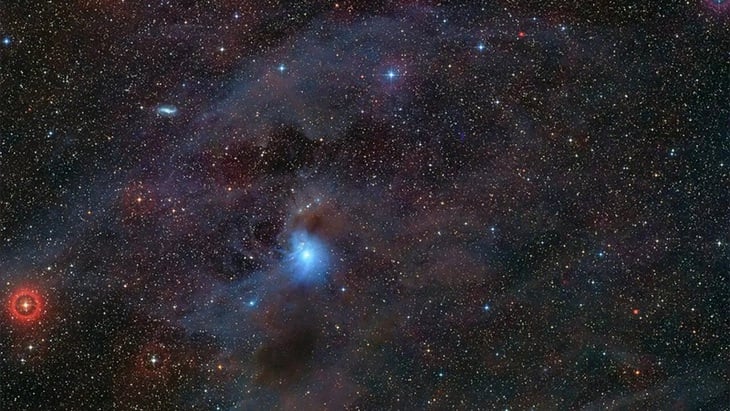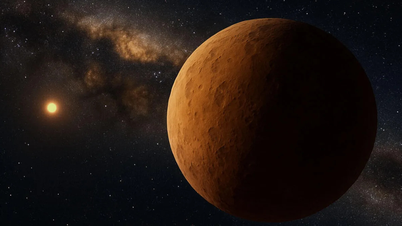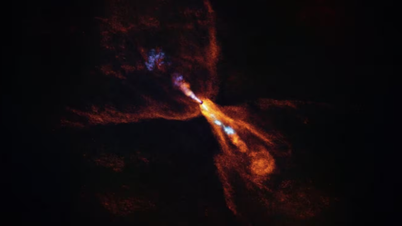
Nomadic planet Cha 1107-7626 is about 620 light years from Earth - Photo: ESO
Wandering planets, also known as rogue planets, are celestial bodies that do not orbit any star but instead drift freely in space. First discovered in 2000, these planets remain a mystery, although estimates suggest that their number in the Milky Way galaxy must be in the trillions, 20 times more than the number of stars.
The object observed this time is Cha 1107-7626, a nomadic planet with a mass 5-10 times that of Jupiter, not large enough to become a brown dwarf (13-80 times that of Jupiter). However, Cha 1107-7626 is showing an unusual rate of "eating" matter, according to the IFLScience news site on October 2.
According to a research team led by the University of St Andrews (UK), in April, May, June and August 2025, Cha 1107-7626 suddenly flared up 1.5 - 2 degrees brighter, equivalent to a 6 - 8 times increase in mass accretion.
The team measured a peak accretion rate of about 10⁻⁷ Jupiter masses per year, which equates to about 6 billion tons per second – the highest rate ever recorded for a planetary-mass body.
"The origin of the nomad planets is still an open question. Scientists are trying to clarify whether they are the smallest bodies formed in the way of stars or gas giants that were ejected from their host star systems," said Professor Aleks Scholz, co-author of the study at the University of St Andrews.
The event is classified as an EXor flare - a short-lived outburst due to increased accretion rates, commonly seen in young stars.
According to the research team, the discovery blurs the line between planet and star, and gives us a glimpse into the earliest formation stages of nomadic planets.
The study was published in The Astrophysical Journal Letters .
Source: https://tuoitre.vn/phat-hien-hanh-tinh-lang-thang-an-6-ti-tan-vat-chat-moi-giay-20251003104244673.htm



![[Photo] Students of Binh Minh Primary School enjoy the full moon festival, receiving the joys of childhood](https://vphoto.vietnam.vn/thumb/1200x675/vietnam/resource/IMAGE/2025/10/3/8cf8abef22fe4471be400a818912cb85)


![[Photo] Prime Minister Pham Minh Chinh chairs meeting to deploy overcoming consequences of storm No. 10](https://vphoto.vietnam.vn/thumb/1200x675/vietnam/resource/IMAGE/2025/10/3/544f420dcc844463898fcbef46247d16)

































































































Comment (0)